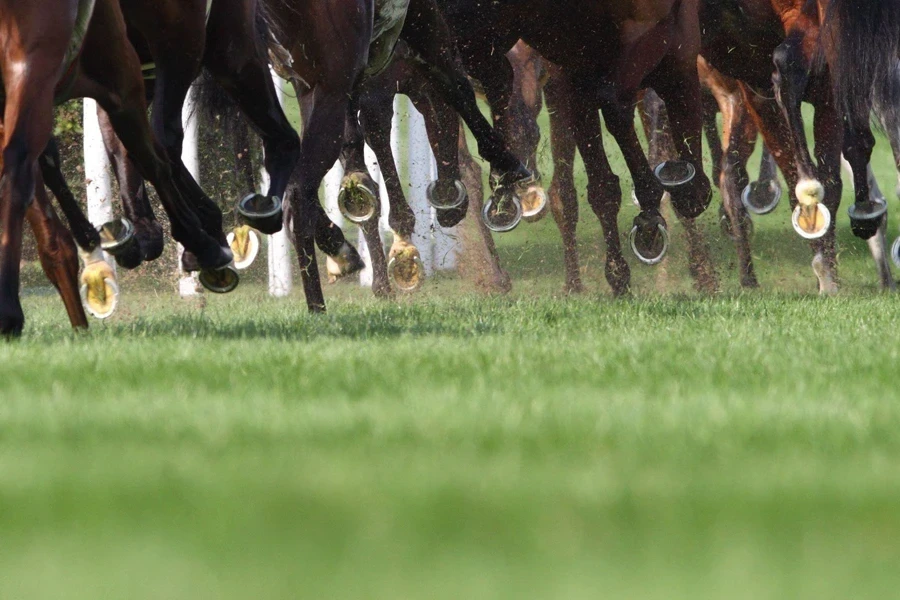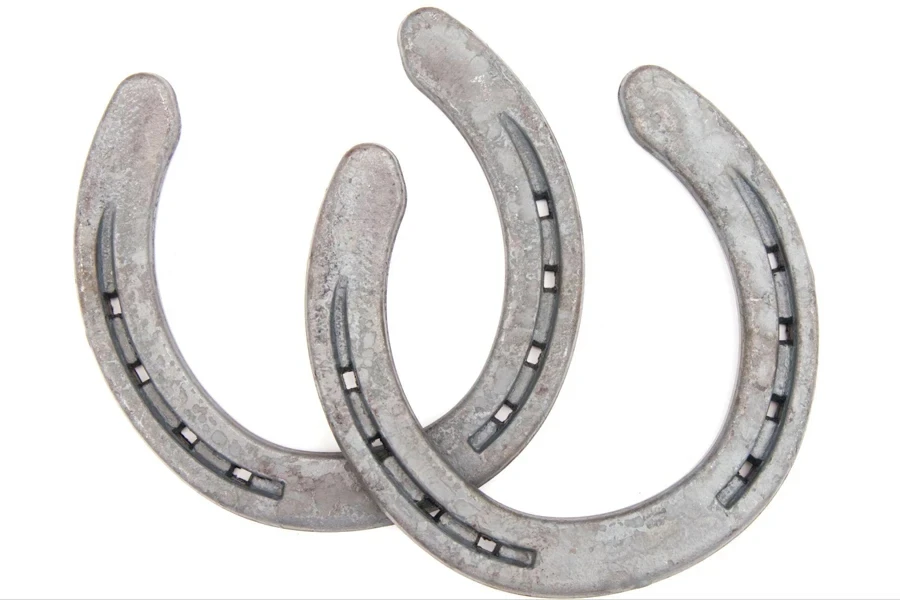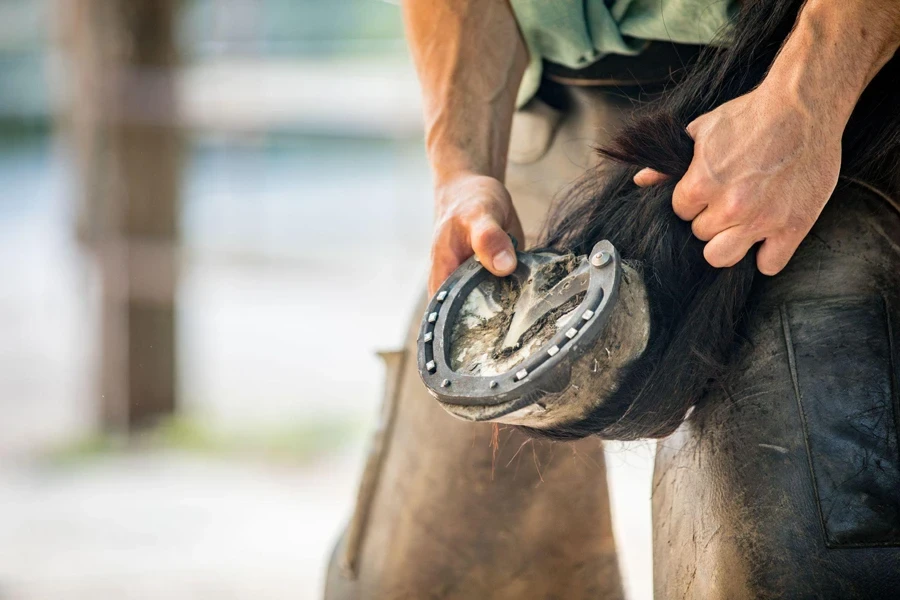Table of Contents
1. Introduction
2. Hoofing It: A Market Overview
3. Forging Ahead: Key Considerations for Horseshoe Selection
4. Shoe-In Success: Top Horseshoe Picks for 2024
5. Conclusion
Introduction
In the world of equestrian sports and horse care, selecting the right horseshoes is paramount for optimal performance and equine health. This comprehensive guide delves into the intricate process of choosing horseshoes, offering valuable insights for business professionals and retailers in the equestrian industry. From market trends to key selection criteria and top product recommendations, we’ll equip you with the knowledge to make informed decisions in this crucial aspect of horse management.
The equestrian events at the 2024 Summer Olympics in Paris are scheduled to run from 27 July to 6 August at the Palace of Versailles. Buyers who are interested in the sports should be prepared ahead of time.
Hoofing It: A Market Overview
The global horseshoe market has experienced steady growth in recent years, driven by increasing participation in equestrian sports and a growing focus on equine health. According to recent market research, the horseshoe segment of the equestrian equipment market was valued at approximately $450 million in 2023, with a projected Compound Annual Growth Rate (CAGR) of 4.8% from 2024 to 2030. This growth is attributed to technological advancements in horseshoe materials and designs, as well as rising demand for specialized shoes for various equestrian disciplines. North America currently holds the largest market share at 35%, followed closely by Europe at 30%, with emerging markets in Asia-Pacific showing rapid growth potential.

Forging Ahead: Key Considerations for Horseshoe Selection
Hoof Anatomy and Conformation
Understanding the unique anatomy of each horse’s hooves is crucial when selecting appropriate horseshoes. Factors to consider include:
– Hoof size and shape
– Heel height and angle
– Sole depth and concavity
– Presence of any hoof abnormalities or pathologies
Conducting regular hoof assessments and working closely with a qualified farrier will ensure proper shoe selection based on individual hoof characteristics.
Intended Use and Discipline
The specific equestrian discipline or intended use of the horse significantly influences horseshoe selection. Consider the following:
– Dressage: Lightweight shoes with minimal interference
– Show jumping: Shoes with enhanced traction and shock absorption
– Eventing: Versatile shoes suitable for multiple disciplines
– Trail riding: Durable shoes with good wear resistance
– Racing: Ultra-lightweight shoes designed for speed
Tailoring shoe selection to the horse’s primary activity will optimize performance and reduce the risk of injury.
Material Composition
Horseshoe materials have evolved significantly, offering a range of options to suit various needs:
– Steel: Traditional, durable, and cost-effective
– Aluminum: Lightweight, ideal for racing and performance horses
– Synthetic materials: Shock-absorbing and beneficial for horses with hoof sensitivities
– Copper and zinc alloys: Antimicrobial properties for improved hoof health
Consider the pros and cons of each material in relation to the horse’s specific requirements and environmental conditions.

Weight and Balance
The weight and balance of horseshoes directly impact the horse’s gait and overall performance:
– Lighter shoes reduce fatigue and improve agility
– Heavier shoes can provide stability and support for certain conditions
– Proper weight distribution ensures balanced movement
Striking the right balance between weight and functionality is essential for optimal performance and hoof health.
Traction and Grip
Adequate traction is crucial for preventing slips and maintaining confidence in various terrains:
– Smooth shoes for indoor arenas and dry conditions
– Textured surfaces or caulks for improved grip on slippery surfaces
– Removable studs for adjustable traction in changing conditions
Consider the primary riding surfaces and environmental factors when selecting traction features.
Therapeutic Considerations
For horses with specific hoof conditions or lameness issues, therapeutic horseshoes may be necessary:
– Bar shoes for additional support
– Egg bar shoes for heel pain or navicular syndrome
– Heart bar shoes for laminitis cases
– Wedge shoes for angular limb deformities
Consult with veterinarians and specialized farriers to determine the most appropriate therapeutic options.

Seasonal Adaptations
Horseshoe requirements may vary with changing seasons:
– Summer: Consider lightweight, breathable options
– Winter: Opt for shoes with snow and ice traction features
– Transitional seasons: Versatile shoes adaptable to varying conditions
Plan for seasonal changes and be prepared to adjust horseshoe selections accordingly.
Quality and Durability
Investing in high-quality horseshoes can lead to long-term cost savings and improved hoof health:
– Assess manufacturing standards and quality control processes
– Consider wear resistance and expected lifespan
– Evaluate warranty and customer support offerings
Prioritize reputable manufacturers with a track record of producing reliable, long-lasting horseshoes.
Shoe-In Success: Top Horseshoe Picks for 2024
When selecting horseshoes for your equestrian business or stable, it’s important to consider the specific needs of your horses and the activities they engage in. Here are some standout features of top horseshoe picks that can help guide your purchasing decisions:
For high-performance equestrian sports, the TechTrot Pro Series offers advanced features that can give your horses a competitive edge. These horseshoes are crafted from a lightweight yet durable aluminum alloy, making them ideal for activities where speed and agility are crucial. The integrated shock-absorbing technology helps reduce the impact on your horses’ legs during intense training or competition. Additionally, the customizable traction inserts allow you to adapt the shoes to different terrains or performance requirements, making them a versatile choice for various equestrian disciplines.
If environmental sustainability is a priority for your business, the NatureFlex Eco-Friendly Line is an excellent option. These horseshoes are made from biodegradable synthetic materials, offering a more eco-conscious alternative to traditional metal shoes. Despite their eco-friendly composition, they don’t compromise on performance, providing excellent shock absorption properties that promote natural hoof flexion. This line is perfect for stables or riding schools that want to appeal to environmentally conscious clients while still ensuring the comfort and well-being of their horses.

For horses with hoof sensitivities or lameness issues, the TherapyPlus Comfort Range offers specialized therapeutic benefits. These horseshoes feature adjustable support features and are compatible with various pad inserts, allowing for customized comfort and support. This flexibility makes them ideal for equine rehabilitation centers or stables that cater to horses with specific hoof care needs. The ability to fine-tune the support can significantly improve the comfort and mobility of horses recovering from injuries or dealing with chronic hoof problems.
The AllTerrain Endurance Model is designed for horses engaged in long-distance riding or trail activities. Constructed from durable steel with tungsten carbide inserts, these horseshoes offer superior wear resistance, making them a cost-effective choice for horses that cover extensive distances. The optimized weight distribution helps reduce fatigue during long rides, which is crucial for endurance competitions. If your business focuses on trail riding or endurance events, these horseshoes can provide the durability and performance needed for such demanding activities.
For racing stables or businesses involved in speed-based equestrian sports, the RaceMaster Ultralight horseshoes are engineered for maximum performance. Made from a cutting-edge titanium alloy, these shoes are exceptionally lightweight, reducing the energy expenditure of horses during races. The aerodynamic profile further enhances speed by reducing air resistance. While these high-tech shoes come at a premium price point, they can be a worthwhile investment for racing operations looking to gain a competitive advantage in high-stakes events.
Conclusion
Selecting the right horseshoes is a critical aspect of equine care and performance optimization. By considering factors such as hoof anatomy, intended use, materials, and specific horse needs, industry professionals can make informed decisions to benefit both horse and rider. Stay abreast of market trends and innovative products to ensure your equine footwear choices remain at the forefront of the industry.
Don’t forget to click the “Subscribe” button to stay updated with more articles that align with your business needs and interests on the Alibaba Reads sports blog.




